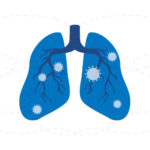Real-time genomic surveillance of bacteria could improve antibiotic therapy

Antibiotic-resistant bacterial infections are increasingly hard to treat, causing more than a million deaths annually around the world. Hospitalized patients with pneumonia, bloodstream infections, urinary tract infections, or abdominal infections are especially at risk. Like a game of Whac-A-Mole, bacteria can develop antibiotic resistance mutations within days of starting an antibiotic, only to be replaced by new mutations when the antibiotic is changed.
A real-time genomic surveillance technology could help physicians keep much closer tabs on resistance mutations — particularly rare mutations that can quickly expand. That could enable patients to get better-matched, better-timed, more effective antibiotic treatment for acute infections in the hospital, chronic infections, and bacterial infections that accompany COVID-19.
The technology, called resistance-targeted deep amplicon sequencing (RETRA-Seq), is described today in Nature Communications. Gregory Priebe, MD, of Boston Children’s, Roy Kishony, PhD, of Technion–Israel Institute of Technology, and first author Hattie Chung, PhD, of the Broad Institute of MIT and Harvard, led its development in collaboration with the Walter Reed Army Institute of Research.
“Currently, clinicians sometimes try giving a certain antibiotic for a defined time and then switching to a different antibiotic,” says Priebe, who is part of Boston Children’s Department of Anesthesiology, Critical Care and Pain Medicine and Division of Infectious Diseases and an associate member of the Broad Institute of MIT and Harvard. “Clinical trials have had mixed results when using this antibiotic cycling approach at the level of a unit or hospital, but what happens in a given patient is unknown.”
Priebe’s goal is to try antibiotic cycling in individual patients, accompanied by genomic surveillance of their bacterial populations. He hopes this approach will inform the choice and timing of initial and subsequent antibiotics as frequencies of resistance mutations change.
Tracking P. aeruginosa’s genetic moves
In a prospective study, the research team combined whole-genome sequencing with RETRA-Seq to track changes in frequencies of different antibiotic resistance mutations over time.
“In clinical testing for antibiotic susceptibility, we test a few colonies of bacteria and can miss some that have developed antibiotic resistance,” says co-investigator Alex McAdam, MD, PhD, medical director of the Infectious Diseases Diagnostic Laboratory. “RETRA-Seq tests the bacterial population as a whole, so it can detect rare antibiotic-resistant bacteria with much higher sensitivity than routine clinical methods.”
The goal is to find the right antibiotic at the right time, which should lead to better patient outcomes.”
The study enrolled seven mechanically ventilated patients at Boston Children’s with acute lower-respiratory Pseudomonas aeruginosa infections (common in ventilated patients). The team first performed whole-genome sequencing of 420 bacterial colonies cultured from the patients’ respiratory sputum samples. Testing began at the onset of infection and continued during its course (from four to 11 days) as patients received antibiotic therapies.
“Remarkably, we found that the bacteria became more genomically diverse in most patients over time,” says Priebe. “The mutations we saw impacted not only regulators of virulence but also many antibiotic resistance genes and pathways.”
The researchers then developed RETRA-Seq to measure the frequencies of antibiotic resistance mutations directly from DNA in the sputum samples. They found that resistance mutations in P. aeruginosa changed rapidly in many of the patients, in step with antibiotic changes. Mutations conferring antibiotic resistance sprang up soon after an antibiotic was started. They disappeared within days of switching to a different antibiotic — when other mutations emerged.
Better care for chronic infections, COVID-19?
Although the team conducted this study in hospitalized patients, real-time genomic surveillance could potentially benefit outpatients with chronic lung infections, such as those seen in chronic obstructive pulmonary disease or cystic fibrosis. Such surveillance could also benefit critically ill patients with COVID-19, Priebe adds.
“Thirty to 50 percent of adults requiring intubation and mechanical ventilation for COVID-19 develop ventilator-associated pneumonia,” Priebe says. “About half of these are due to gram-negative bacteria such as P. aeruginosa that tend to cause serious infections in hospital settings.”
The authors have filed a provisional patent application on the RETRA-Seq technique.
“With more study, we hope that a technique like RETRA-Seq could help us choose an antibiotic that won’t drive expansion of low-frequency resistant bacteria that are lurking in our patients,” says Priebe. “The goal is to find the right antibiotic at the right time, which should lead to better patient outcomes.”
Learn more about research in Critical Care Medicine at Boston Children’s
Related Posts :
-

Beware probiotics in ICU patients
It’s become common for patients in the intensive care unit (ICU), both children and adults, to receive probiotics. Often, ...
-

What drives severe lung inflammation in COVID-19?
A main feature of COVID-19 is lung inflammation and respiratory failure caused by an overexuberant immune response known as the ...
-

Online ventilator training addresses COVID-19 clinician shortage
While hospitals around the nation and the world scramble to locate enough mechanical ventilators to treat an influx of patients ...
-

Improving developmental care for infants in the Cardiac Intensive Care Unit
Infants born with congenital heart disease (CHD) are some of the most fragile patients, often requiring surgery or other interventions ...





